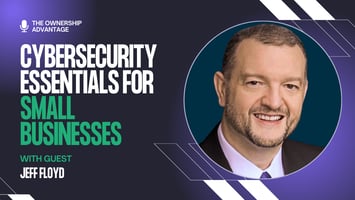Strategies to Elevate Your Business to New Heights
Mastering Lead Generation: Smart Strategies for Real Business Growth
Lead generation can feel overwhelming. With a dizzying array of tactics and tools promised by every marketing guru, it’s easy to get lost in the weeds. In the latest episode of The Ownership Advantage, hosts Tanner and Kay pull back the curtain on practical, resourceful approaches to lead generation, rounding out their five-part series on profit growth. Here’s an in-depth look at their conversation—packed with actionable insights for business owners and marketers at any stage.
The Real Role of Lead Gen: Why It Comes Last
Tanner immediately points out an often overlooked truth: lead generation is the most resource-intensive part of business growth. That’s why he and Kay place it at the end of their five-part system. Before pouring time or money into lead gen experiments, it’s essential to optimize conversion rates, average sale amounts, transaction frequency, and profit margins. Doing so ensures every new lead is as valuable as possible, making your efforts far more effective.
“Anytime you can control the next step that [your audience] takes, that’s where you’re going to actually win the lead gen game,” Tanner explains. This philosophy underpins all of the strategies discussed in the episode.
There’s No Silver Bullet—Only Systems and Focus
With “87 different ways” to generate leads, it’s tempting to try everything and hope something sticks. But as Tanner reveals, the secret isn’t chasing the next shiny marketing trick, but choosing channels that actually fit your business, then committing to them.
“Any one of these can work, and all of them do work. It’s just a matter of which ones do you put the focus on to make them work?” he says. Instead of saying yes to every lead gen channel—email, social media, telemarketing, networking, direct mail—first identify where your best leads really come from. Double down on what works before testing new ideas in small batches.
Warm Audiences First: Start Where Trust Exists
Kay and Tanner both emphasize the power of starting with your warm market. This is your friends, existing customers, and anyone already connected with you. “Literally just go through every single contact on your phone,” Tanner advises. Then expand to your social network connections, and eventually reach their networks for further reach.
Working warm leads is less expensive, typically yields better conversion rates, and provides valuable feedback before you spend on colder, riskier channels like paid ads.
Making the Most of Speaking Engagements
Live speaking opportunities, whether on stage or via webinars, are goldmines for leads. Kay asks how to turn thought leadership moments into real contacts—without feeling awkward. Tanner breaks it down:
- Match your CTA to audience warmth. Cold audiences require lighter asks—maybe just an email address for a free resource—while warm rooms that know you well are ready for deeper engagement.
- Leverage the event atmosphere. “Start walking around, talking to people, get to know them, warm the room,” Kay suggests. Don’t just deliver your speech and leave; build rapport before and after.
- Control the next step. Use printed surveys, QR codes, or digital forms to easily capture attendee info, then follow up personally to continue the conversation.
Translating Offline Strategies to Online Platforms
But what about non-live environments? Tanner explains that email isn’t a lead gen channel itself, but a nurturing tool for leads captured elsewhere. To bring your stage presence online, create digital “CTAs” in your social posts and content.
- Encourage comments, shares, or direct messages as a way to open conversations.
- Use social listening: See who’s engaging with your content, then follow up with a personalized message.
- Gradually move connections to a database or email list you own, where you can nurture them toward a sale over time.
Choosing the Right Next Step: Sales Call, Download, or Coffee Chat?
A sticking point for many business owners (including Kay) is what to offer next: a direct sales call, a helpful resource, or something in-between? Tanner’s answer: it depends on your audience’s relationship with you and their stage in the buying journey. Test different next steps, track conversion rates, and let data—not assumptions—guide your lead gen path.
Key Takeaways: Lead Gen Is a Process, Not a Sprint
- Prioritize warm contacts before broad marketing.
- Select, systemize, and focus on a few channels at a time.
- Always track what works and double down before expanding.
- Mirror your own buying journey—make the process easy for others.
- Never do it alone—collaborate, seek specialist help, and refine constantly.
Lead generation might be complex, but with these principles, you’ll make progress that’s profitable, purposeful, and sustainable. For more insights, re-visit the full podcast episode and previous installments of The Ownership Advantage. The growth you want is only a conversation—and a strategic CTA—away.
Check out the full episode on YouTube HERE
Listen to the full episode on Apple Podcasts HERE


